Not all microfiber towels are created equal. Many underperform, leaving streaks or lint. I’ve spent years in this industry, and I know what sets truly high-quality towels apart.
High-quality microfiber towels have ultra-fine, split fibers and high fiber density for superior absorbency and softness1. They typically feature a 70/30 polyester-polyamide blend2 and strong construction, so they’re lint-free, scratch-free, and durable enough to withstand hundreds of washes.

Understanding these qualities is just the beginning. In the rest of this article, I’ll break down microfiber towel grades3, the difference between 70/30 and 80/20 blends, tips for choosing top-notch towels, and what the very best microfiber looks like.
Are there different grades of microfiber towels?
Walking into a store, you’ve probably noticed some microfiber towels are thick and plush while others are thin. This isn’t your imagination—there are indeed different grades of microfiber.
Yes, microfiber towels come in several grades determined by their density (GSM), fiber blend, and weave. Higher-grade towels are denser (higher GSM) and use finer fibers, making them plusher and more absorbent. Lower-grade microfibers are thinner and less absorbent, best for light cleaning tasks.
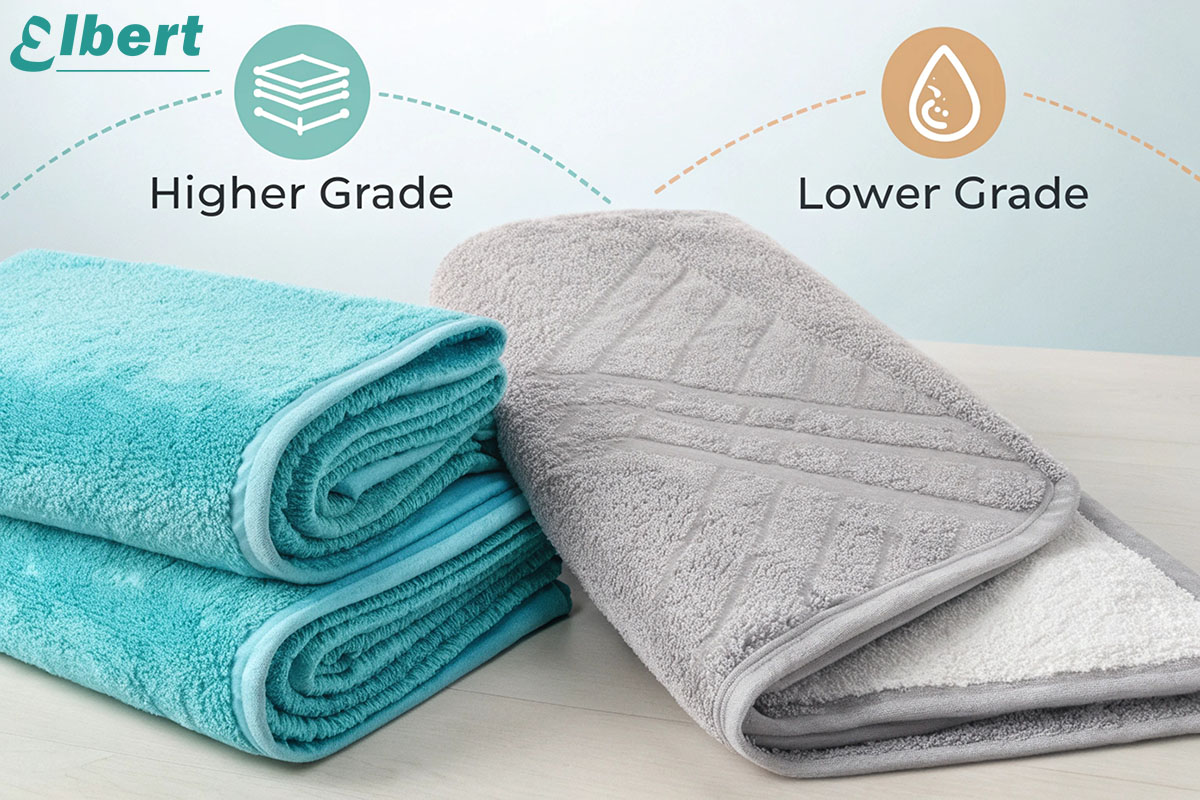
GSM (Fiber Density)
Microfiber towels are often categorized by their weight or density, measured in grams per square meter (GSM). A higher GSM means the towel has more fiber packed in each square meter of fabric, making it thicker and generally more absorbent. For example, a towel with 450 GSM will feel heavier and soak up more liquid than one rated at 250 GSM. High-quality towels tend to have medium to high GSM. However, the ideal weight also depends on the task (for example, glass cleaning might use a lower GSM towel than car drying).
| Grade (GSM) | Thickness | Common Uses |
|---|---|---|
| Low GSM (200–300) | Thin, lightweight | Light dusting, quick wiping |
| Medium GSM (300–400) | Moderately thick, good absorbency | General cleaning, wiping surfaces |
| High GSM (400+) | Very plush and heavy, ultra-absorbent | Drying tasks, polishing delicate surfaces |
Fiber Splitting4 and Thickness
The quality of microfiber also depends on how fine and split the fibers are. Each microfiber strand is much thinner than a human hair; high-grade towels use ultra-fine fibers that have been split during manufacturing to create microscopic hooks. These split fibers give the towel its “grippy” feel on your skin and its ability to grab dust and liquid effectively. If a microfiber towel glides very smoothly without catching at all, it might not have split fibers. This is common in lower-quality cloths and reduces its cleaning power. Finer fibers (often measured by denier) result in a softer touch and better performance, especially on delicate surfaces, because they leave fewer scratches and streaks.
Weave Patterns5 and Purpose
Microfiber towels come in various weaves (texture styles). Weave is more about function than pure quality, but it’s still a factor to consider. Terry weave towels (with a plush looped texture) are common all-purpose microfiber towels; high-quality ones have a dense, even pile. Waffle weave microfiber has a patterned texture that excels at drying and streak-free glass cleaning by channeling water into the grooves. Suede or flat weave cloths are smooth and lint-free, perfect for mirrors, windows, and electronics. A well-made towel can be any of these weaves. The key is a densely packed, tight weave with no loose threads. In contrast, lower-grade towels often have a looser weave that doesn’t trap dust effectively or hold up well.
Is 70/30 microfiber better than 80/20?
You’ve likely seen microfiber towels labeled with ratios like 70/30 or 80/20. It’s easy to wonder if one blend is superior, especially when you’re looking for the best performance.
Microfiber towels with a 70/30 (polyester/polyamide) blend contain more polyamide, making them softer and more absorbent than 80/20 towels. Typically, a 70/30 towel is considered higher quality for delicate or drying tasks, while 80/20 offers a good balance for general cleaning.
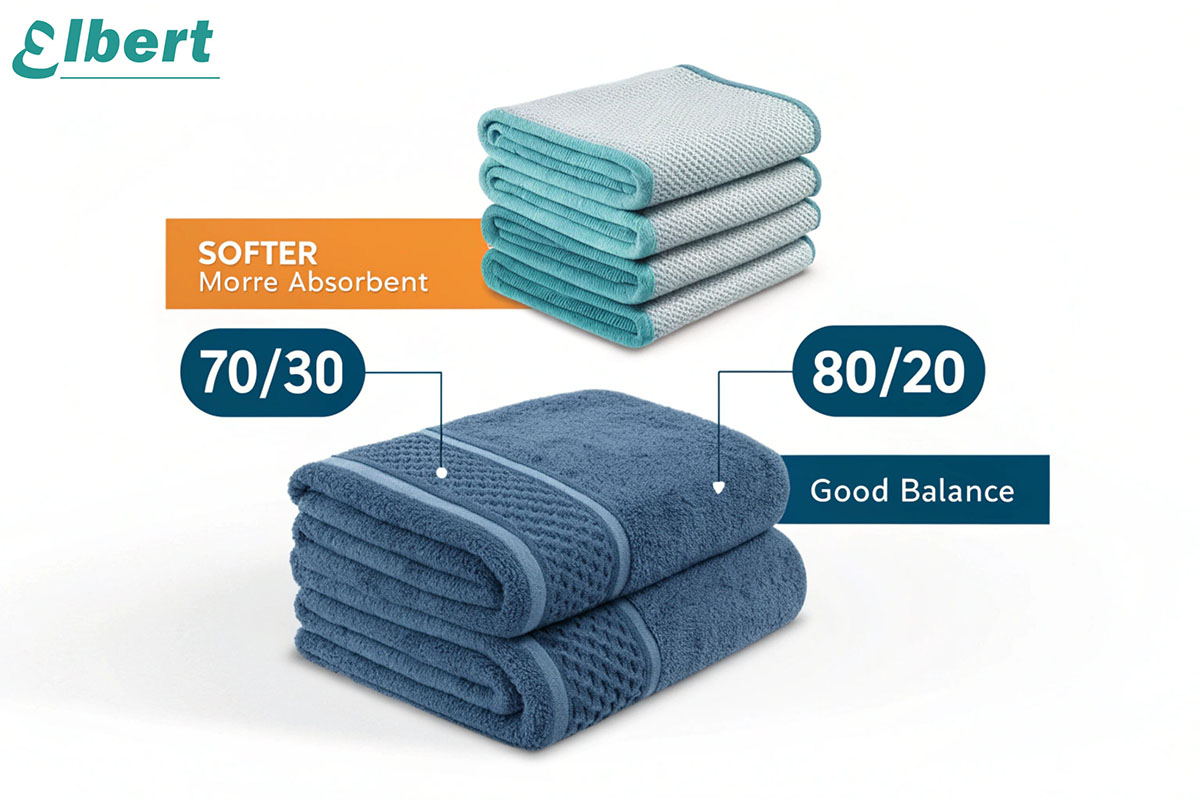
What Do 70/30 and 80/20 Mean?
The two numbers refer to the percentage of polyester and polyamide (nylon) in the microfiber fabric. For example, an 80/20 towel is 80% polyester and 20% polyamide. Polyester is strong and gives the towel durability and structure, while polyamide is a softer fiber that dramatically boosts absorbency. In essence, more polyamide (as in 70/30) means a towel can hold more water and feel gentler. Both 70/30 and 80/20 are considered good blends for cleaning; the main difference is just the balance between those two fibers.
Softness, Absorbency, and Durability
A 70/30 microfiber towel, having 30% polyamide, is generally softer and more absorbent than an 80/20 towel. The higher nylon content gives it a plush, velvety feel and allows it to soak up liquid readily. This makes 70/30 towels excellent for tasks like drying a car or final wiping on delicate surfaces where you want absolutely no scratching or streaking.
An 80/20 towel, with slightly less polyamide, is still very absorbent and soft. It’s often perfectly adequate for most cleaning jobs. However, it might feel a bit less plush compared to a comparable 70/30 towel. In terms of durability, both blends can last a long time if made well. Polyester fibers add toughness, so an 80/20 towel could have a slight edge in theory. In practice, a high-quality 70/30 towel is also extremely durable. The main practical difference between the blends is usually in feel and absorbency rather than lifespan.
When to Use Each Blend
70/30 towels are often favored for tasks that demand the highest softness and absorbency. For example, professional auto detailers use 70/30 microfiber for buffing off wax or drying paintwork, because the towel glides gently and picks up every drop of water. These towels are also great for cleaning eyeglasses or screens, where you want a gentle touch.
80/20 towels offer a great balance and are very common for general household cleaning, car interiors, or wiping down countertops. They tend to be slightly more cost-effective and widely available, and they work well for everyday tasks.
In truth, a well-made 80/20 towel6 can perform just as well as a 70/30 towel for most people’s needs. The blend alone doesn’t make or break a towel’s quality. Overall construction (fiber splitting, weave, GSM, etc.) matters just as much.
| Attribute | 80/20 Blend | 70/30 Blend |
|---|---|---|
| Polyamide (Nylon) Content | 20% | 30% |
| Softness | Soft | Softer, plush feel |
| Absorbency | High | Very high |
| Best Uses | All-purpose cleaning, everyday wiping | Drying, polishing, delicate surfaces |
| Cost | Often more affordable | Typically a bit more premium |
How do I choose high quality towels?
With countless microfiber towels on the market, picking a high-quality one can feel overwhelming. I’m often asked how to tell a truly good towel from the rest.
To pick a high-quality microfiber towel, look at the blend, weight, and construction. Choose towels with a 70/30 or 80/20 polyester-to-polyamide blend and a dense weave (high GSM). They should feel soft yet slightly “grippy,” with well-finished edges and no loose lint.
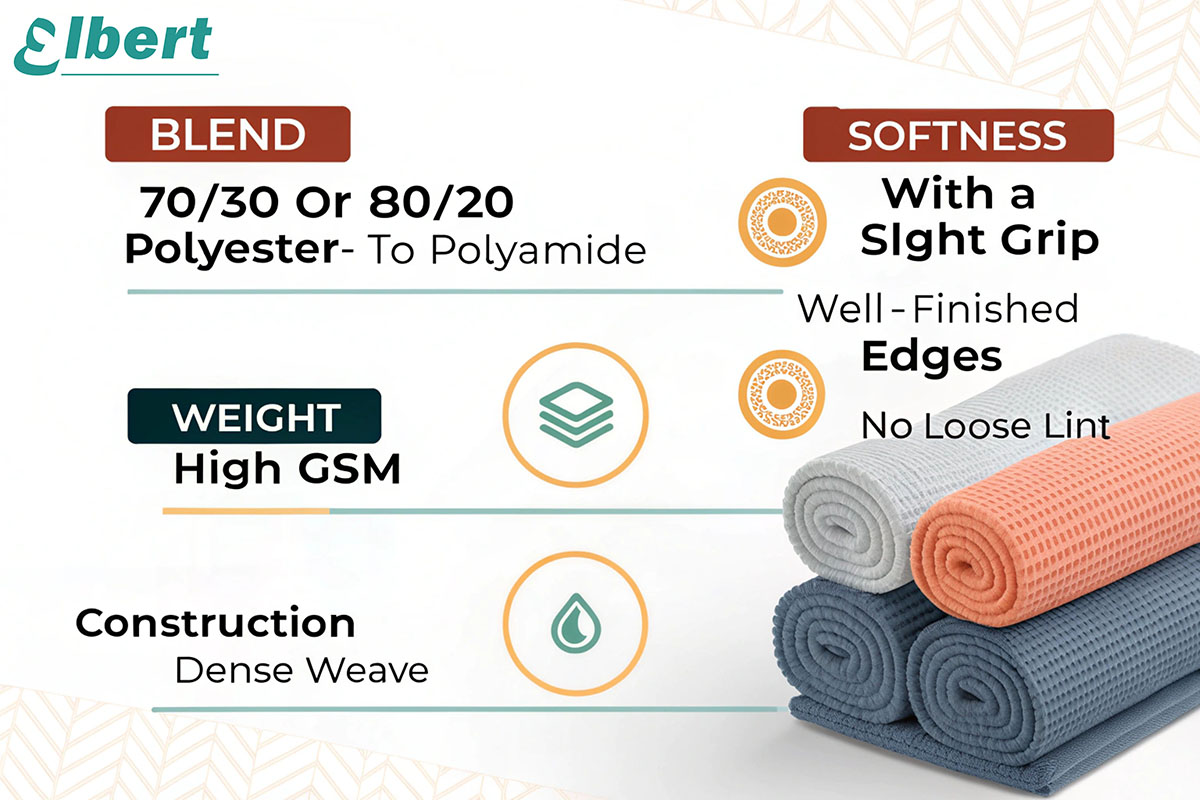
Quality Checklist for Microfiber Towels
- Fiber Blend: Start by checking the polyester vs. polyamide ratio on the tag or description. Aim for a blend around 80/20 or 70/30. Avoid towels that are 100% polyester or have very low polyamide content (they won’t absorb as well).
- Weight (GSM): Look for the towel’s weight if listed. High-quality towels usually have a higher GSM (for example, 300 GSM and up for general use, and 400+ for deluxe plush towels). A heavier towel generally indicates more material and a denser weave.
- Fiber “Grip” Test: Feel the towel with your hand. A great microfiber towel should feel slightly grippy against your skin due to the split fibers. If you drag it across your palm and it clings a bit, that’s a good sign. If it just slides without any friction, the fibers might not be fully split (meaning it may be lower quality).
- Edges and Stitching: Inspect the edges of the towel. High-quality microfiber often has soft, well-stitched edges or is edgeless (edges laser-cut or ultrasonic-cut) to prevent fraying. There should be no loose threads. Cheap overlocked edges or rough bindings can scratch surfaces and are a sign of a lower-end towel.
- Lint and Dye: Before first use, give the towel a shake or wipe a mirror with it. A quality towel shouldn’t leave behind lint or fuzz. Also, be cautious of towels with very bright dyes that bleed when first washed – reputable manufacturers pre-wash or use stable dyes.
- Certifications or Brand Reputation: If possible, buy from a trusted brand or supplier. Certifications like OEKO-TEX (which ensures the fabric is free of harmful substances) indicate the manufacturer cares about quality control. And of course, check reviews or recommendations — my years in this business have shown me that well-reviewed products usually live up to their claims.
Following this checklist will help you pick out microfiber towels that not only clean better but also last longer, even with regular use.
What is the best quality microfiber?
We all want the best tools for the job, and microfiber towels are no exception. When only the highest quality will do, what should you look for?
The very best microfiber towels have a high polyamide content7 (around 30%), ultra-fine fully split fibers8, and a dense, heavy weave9. They are exceptionally soft and absorbent, leave no lint or scratches on surfaces, and maintain their performance through many wash cycles.
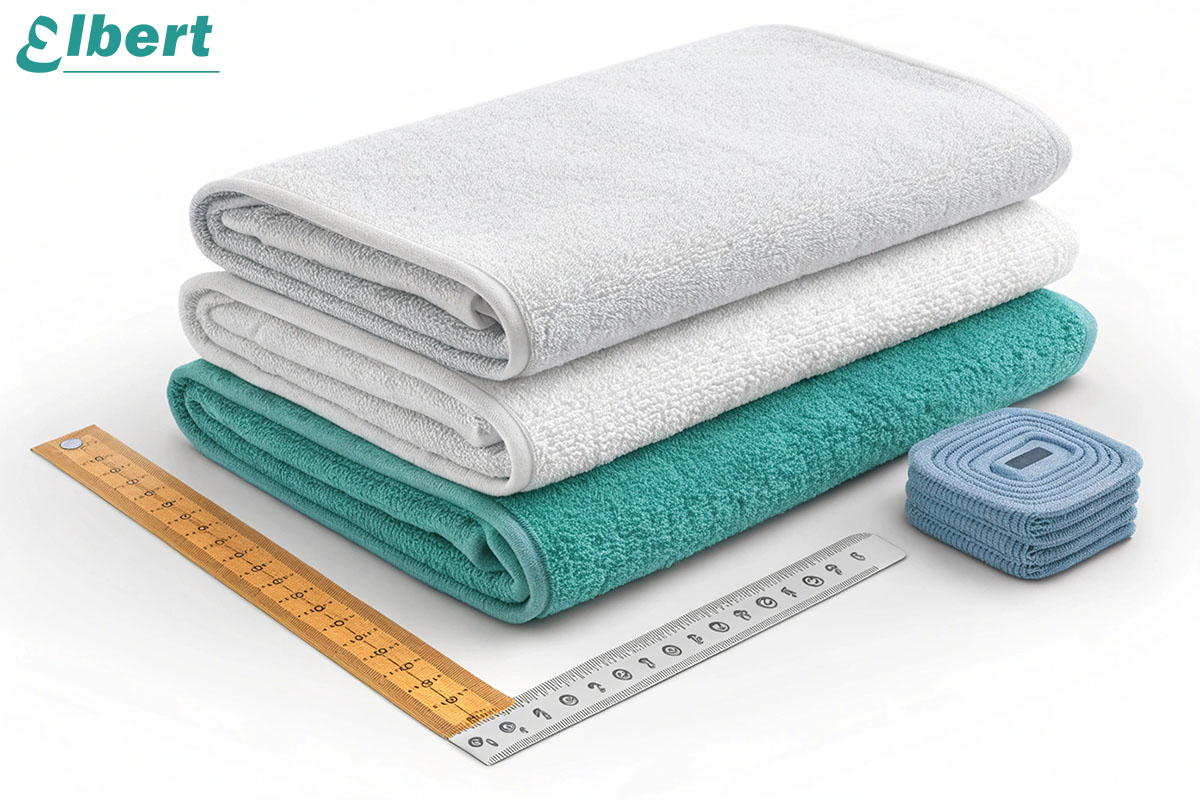
Uncompromising Material and Build
The best microfiber towels in the world are made with absolutely top-grade materials and manufacturing techniques. First, they use the highest quality microfiber yarns, which means ultra-fine fibers that are evenly split10 for maximum surface area. These towels often have a high GSM (sometimes 500 GSM or more, depending on their purpose), so they feel luxuriously thick and plush. The blend is typically 70/30 (or an equivalent high polyamide mix), giving them that superior absorbency and softness.
Construction-wise, premium towels might feature edgeless designs11 (the edges are laser-cut or hidden) or very high-end border stitching (such as silk binding) to eliminate any chance of scratching. Every detail is considered: the corners, the seams, and even the dye quality (no chemical odors or color bleeding). When you hold a top-tier microfiber towel, it’s noticeably different – it drapes heavier, grips glass with ease, and has a silky-smooth touch despite being highly grippy on dirt.
Performance and Longevity Benefits
What do these high-end features translate to in use? In short, a best-quality microfiber towel makes cleaning easier and more effective. It will absorb a huge amount of liquid without needing to be wrung out frequently, and it can pick up fine dust and micro particles in one pass, leaving surfaces completely clean and streak-free.
Such towels are gentle enough for the most sensitive finishes. You can wipe your car’s black paint or a high-end TV screen with confidence, knowing the towel won’t leave a scratch.
Moreover, these towels are built to last. A premium microfiber can endure hundreds of wash cycles with proper care, maintaining its softness and performance each time. I’ve seen cheap towels fall apart or lose effectiveness after a dozen washes, whereas the best towels just keep going. Over time, investing in one great microfiber towel can actually be more economical than replacing many lower-quality ones. And beyond performance, there’s a certain satisfaction in using a well-crafted tool – it just feels right, and it gives you professional-level results with minimal effort.
It’s worth noting that “best” can be context-specific: the best drying towel might be a different style (e.g. a heavyweight waffle or twist-loop weave) compared to the best polishing towel (a plush terry cloth). But in all cases, the top-quality examples share the same hallmarks of high polyamide content12, fine fibers, and careful construction. If you stick to those principles, you’ll have the best microfiber towel for the job in your hands.
High-quality microfiber towels stand out for their fine, dense fibers, balanced blend, and superior construction13. Investing in better towels pays off with easier cleaning and longer-lasting performance.
Elbert Zhao
Founder, ELBERT Wipes Solutions
📧[email protected] | 🌐 www.elbertwipes.com
8 production lines | 22 processing lines | OEKO-TEX certified | Walmart-approved supplier
-
Explore how microfiber towels achieve superior absorbency and softness, making them ideal for various cleaning tasks. ↩
-
Learn about the significance of the 70/30 polyester-polyamide blend in microfiber towels and how it affects performance and quality. ↩
-
Understanding microfiber towel grades helps you choose the right towel for your needs, ensuring better cleaning and drying performance. ↩
-
Learn how fiber splitting enhances cleaning efficiency and softness, crucial for selecting high-quality microfiber towels. ↩
-
Explore various weave patterns to find the best microfiber towel for specific tasks, enhancing your cleaning experience. ↩
-
Explore the advantages of 80/20 towels to understand why they might be the perfect choice for your cleaning needs. ↩
-
Understanding the significance of high polyamide content can help you choose the best microfiber towels for your needs. ↩
-
Learn how these fibers improve the effectiveness of microfiber towels, ensuring superior cleaning and drying capabilities. ↩
-
Discover why a dense weave is crucial for durability and performance in microfiber towels, making them a worthwhile investment. ↩
-
Discover how ultra-fine fibers enhance the performance and durability of microfiber towels, making them essential for cleaning and drying. ↩
-
Explore the benefits of edgeless designs in microfiber towels, including reduced scratching and improved durability. ↩
-
Learn about the significance of high polyamide content in microfiber towels for durability and cleaning efficiency. ↩
-
Explore how superior construction in microfiber towels contributes to their longevity and effectiveness in cleaning tasks. ↩

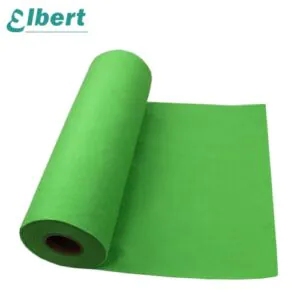

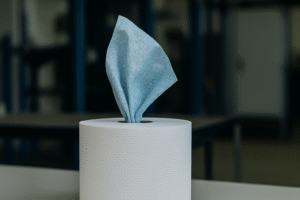
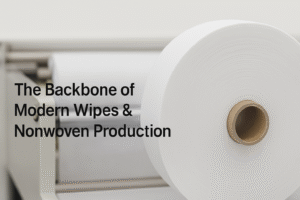

2 Responses
Je recommande vivement Ernestopro.fr pour tous vos besoins en serviettes en microfibre de haute qualité. Leur large gamme de produits assure une excellente absorption, douceur et durabilité, idéale pour le nettoyage professionnel ou domestique. La qualité supérieure de leurs microfibres, notamment celles avec des compositions 70/30 ou 80/20, garantit une performance optimale. Je suis satisfait de leur expertise et de leur service client, qui m’ont conseillé dans le choix des modèles adaptés à mes projets. Ernestopro.fr est la solution fiable et performante pour des serviettes en microfibre de qualité exceptionnelle.
Thanks